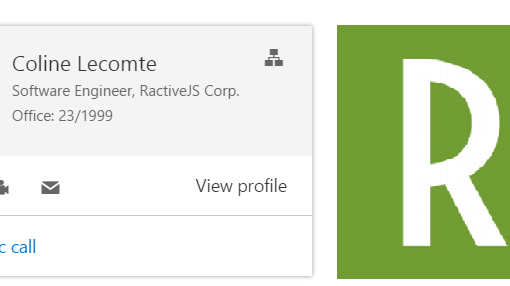This article covers an older version of the source code linked below. A few additional options, like filtering spam-tweets, came in but the base functionality remained the same. If you experience any problems using the newer versions, please, leave a comment. I am a Twitter-Addict. Most of my coding-related stuff comes from links and suggestions via Twitter. And of course I’m using it everywhere, from desktop to smartphone, while travelling, or at work. My carefully defined feeds are always fresh & flowing. However, sometimes I just want to have all the interesting tweets collected in one place without any external […]
brakmic
In this article we’ll explore events, keypaths and observers in RactiveJS environments. The application we’re going to build will comprise of a single RactiveJS instance which calls a remote web-service and injects received data into a predefined template. The source code for this article is here. And a LiveDemo. This is how our app looks like: RactiveJS Events Unsurprisingly, RactiveJS offers a Publish/Subscribe system to react to, or trigger events. A typical event declaration would be like this: <script id=”some-template type=”text/ractive”> <input type=”button” on-click=”save-button-was-clicked“> </script> The part in red declares a RactiveJS event directive which reacts to DOM’s click-event by forwarding the information through a […]
In this article we’ll create a web component based on Ractive.JS and Office UI Fabric. I’m not going to discuss all the theory behind components because I consider it a waste of time (at least in this case). What’s important to know is that RactiveJS’ components contain style (css), structure (html) and logic (javascript) bundled in a single file. And the goal of this article is to show how to integrate such files in JavaScript projects and compile them with WebPack & Gulp. To make the whole thing more realistic we’ll reuse the PersonaCard-component from Office UI Fabric. A Live Demo can be found here. The complete source code is […]


